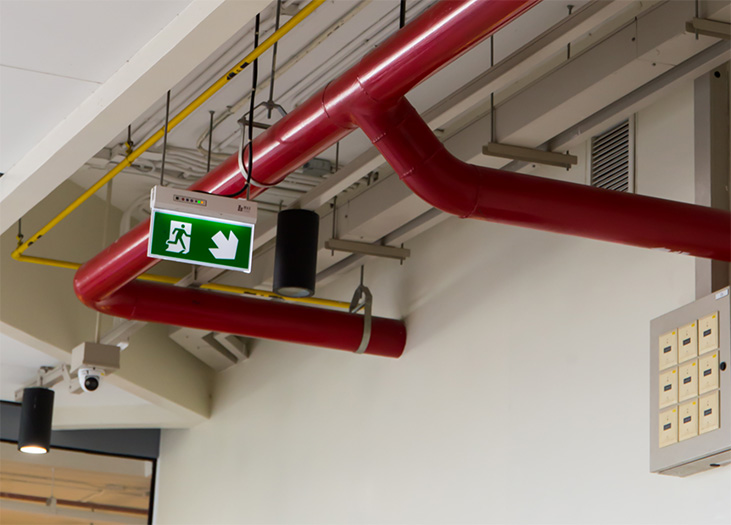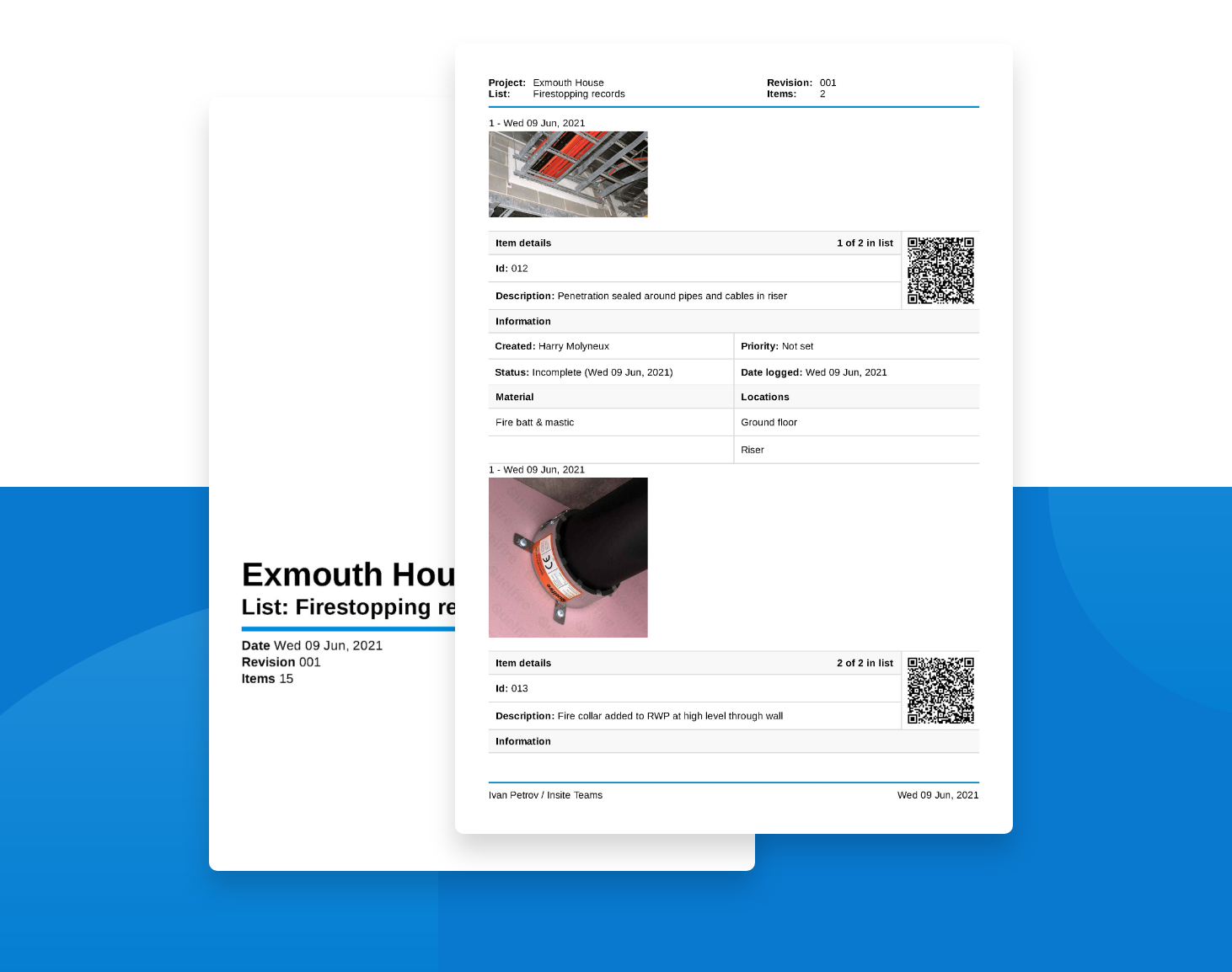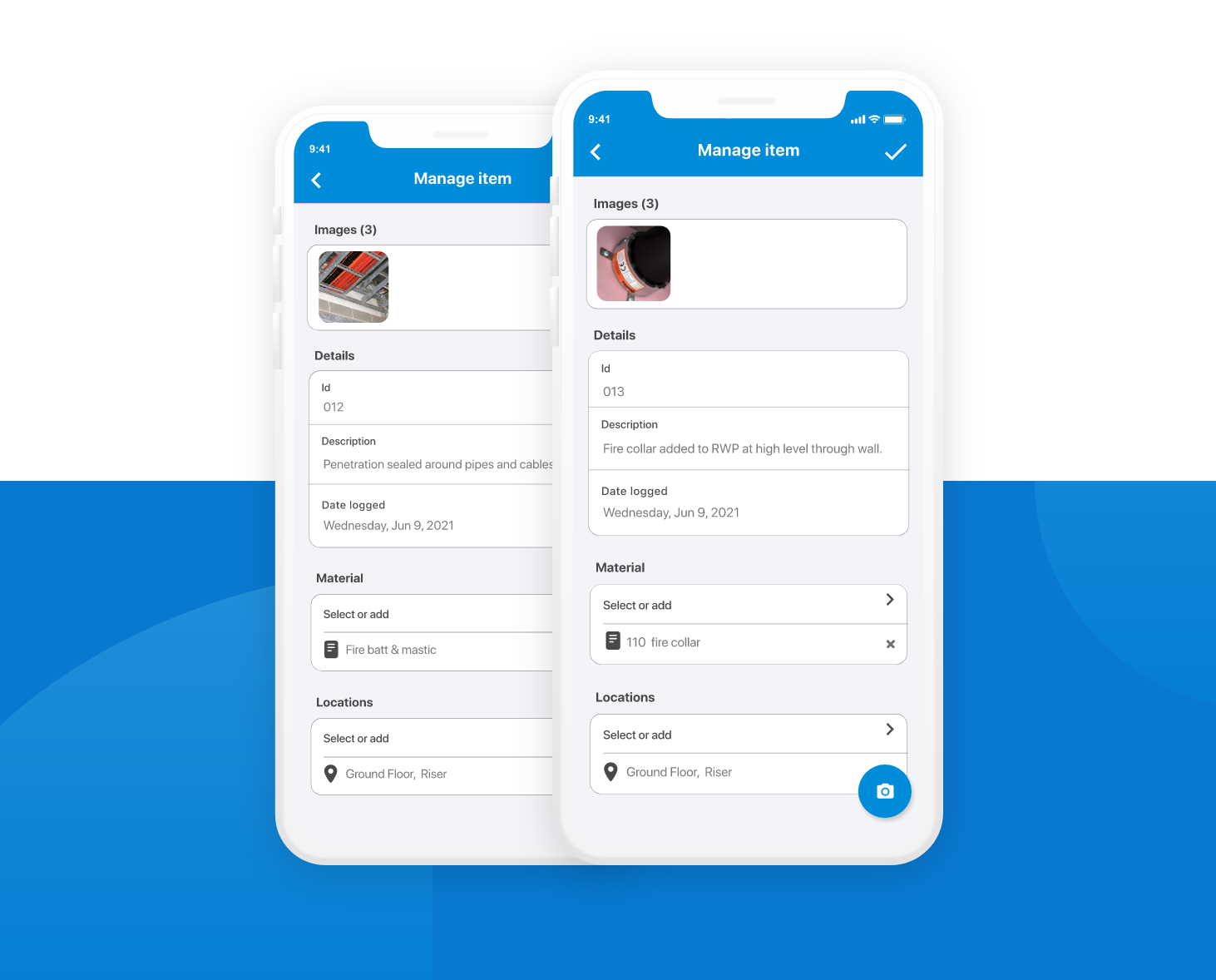Resources
Case studies
Videos
Sample reports
Free inspection templates
Learn
Blog
Product brochure
Training pack
Get the app
Download the app
Changelog
2021-06-15 | 4 min read
Why are fire stopping records so important and how can they be maintained?

Fire stopping is a key element of all refurbishment and new build construction projects, and when you take a look at the statistics it isn’t too hard to see why there are statutory requirements in place under Building Regulations Part B[1]. Without adequate fire stopping, fire may spread uncontrolled through the building causing deaths that could otherwise be prevented.
A shocking 21% of all fire related deaths[2] have been shown to involve individuals who aren’t even in the room where the blaze originates, and who often lose their lives due to smoke inhalation rather than burns if they are unable to escape the building as quickly as possible. During 2019-2020, there were 243 fire-related deaths[3] in the UK with a large proportion of those fatalities being in the elderly and those who struggle to exit a building quickly. 61% of all fire fatalities are in the over-60 age bracket[4] – something which proves that measures must be put in place to slow down the spread of fire in order to give those who are less mobile the opportunity to escape the premises.
Therefore, building regulations now require the incorporation of inbuilt fire measures to keep breaches fireproofed and floors, ceilings and walls all designed within the required criteria, and those measures taken must be officially logged in order to comply with legal requirements.
"those measures taken must be officially logged in order to comply with legal requirements"
What would be the negative consequences of failing to keep fire stopping records?
Of course, the main negative consequence of failing to keep appropriate fire stopping records is potential injury and loss of life for anyone in the building. However, there are other factors to consider too.
For contractors, the costs can be extensive, not only in financial terms but also with respect to their reputation in the industry, not only in the event of a fire causing widespread damage and destruction to a building that they have worked on, but also if a future inspection should reveal that records have not been properly maintained.
"For contractors, the costs can be extensive, not only in financial terms but also with respect to their reputation"
The cost of repairing a property without appropriate fire stopping measures in place could be extremely high for the homeowner or end user, while loss of contents of the building will almost certainly incur additional expense not to mention potentially inflicting emotional distress.
Add into the mix the possibility of legal action being taken by end users, homeowners or tenants against the contractors and it’s easy to see why there are some seriously high costs involved in failing to keep and maintain fire stopping records.
How to keep and maintain effective fire stopping records
Keeping updated fire stopping records couldn’t be more important for anyone working on a construction new build or renovation project. While such logs will usually be undertaken by fire stopping contractors, records will also be kept by the main contractor’s site manager, the subcontractor, and either the client or their consultants too. This means that finding a convenient and user-friendly system for maintaining such logs is essential.
All-too-often, there is a lack of records for penetrations within voids that are hidden once construction works have been completed or which are inaccessible. As quoted in the Local Government Association brochure regarding fire safety[5], in purpose built blocks of flats:
it can also be difficult to determine what standard has been achieved, especially in relation to compartmentation, given that some of the relevant elements of structure are often hidden and inaccessible.

Solid records are essential to evidence the works undertaken
Furthermore, there is an additional problem in that records are often not robust enough and fail to record the penetration, time, date, and materials used for fire stopping against the specific works. With this in mind, it’s easy to see why finding an effective solution that can eliminate these issues is so essential.
Finding an efficient recording solution
Since many individuals will usually be working in collaboration on any construction project, there needs to be an effective way for every stakeholder to log fire stopping records on a single platform. This can eliminate the problems associated with inconsistent and poor quality logging. Fortunately, Insite is the ideal solution, taking the form of a photographic auditing app that is designed for use on the go.
This app offers the following features to simplify the fire stopping measure recording process and make it more streamlined:
- Images which are able to be commented on and marked up
- Unique IDs for each fire stopping measure used
- Descriptions of works
- Choices of various material types
- Dropdown options of different locations
- Automatic logging of dates, times and users
- Additional comments sections
- Export to Excel and PDF functionality for easier record keeping
With this convenient solution, it couldn’t be easier to set up and maintain effective fire stopping records for any construction project, thus ensuring that adequate protection has been put in place for the building and its occupants in the event of a future fire.

Using Insite to record fire stopping works
[1]: HM Government - Fire safety: Approved Document B
https://www.gov.uk/government/publications/fire-safety-approved-document-b
[2]: P.G. Holborn et al. - An analysis of fatal unintentional dwelling fires investigated by London Fire Brigade between 1996 and 2000
https://plumis.co.uk/sites/plumis-co-uk/files/2019-07/Holborn%20London%20Fire%20Stats%20Analysis%20%28002%29.pdf
[3]: Home Office - Detailed analysis of fires attended by fire and rescue services, England, April 2019 to March 2020
https://assets.publishing.service.gov.uk/government/uploads/system/uploads/attachment_data/file/923072/detailed-analysis-fires-attended-fire-rescue-england-1920-hosb2820.pdf
[4]: Scottish Fire & Rescue Service - For Older People
https://www.firescotland.gov.uk/your-safety/for-older-people.aspx
[5]: Local Government Association - Fire safety in purpose-built blocks of flats
https://leics-fire.gov.uk/wp-content/uploads/2016/10/fire-safety-in-purpose-built-flats.pdf